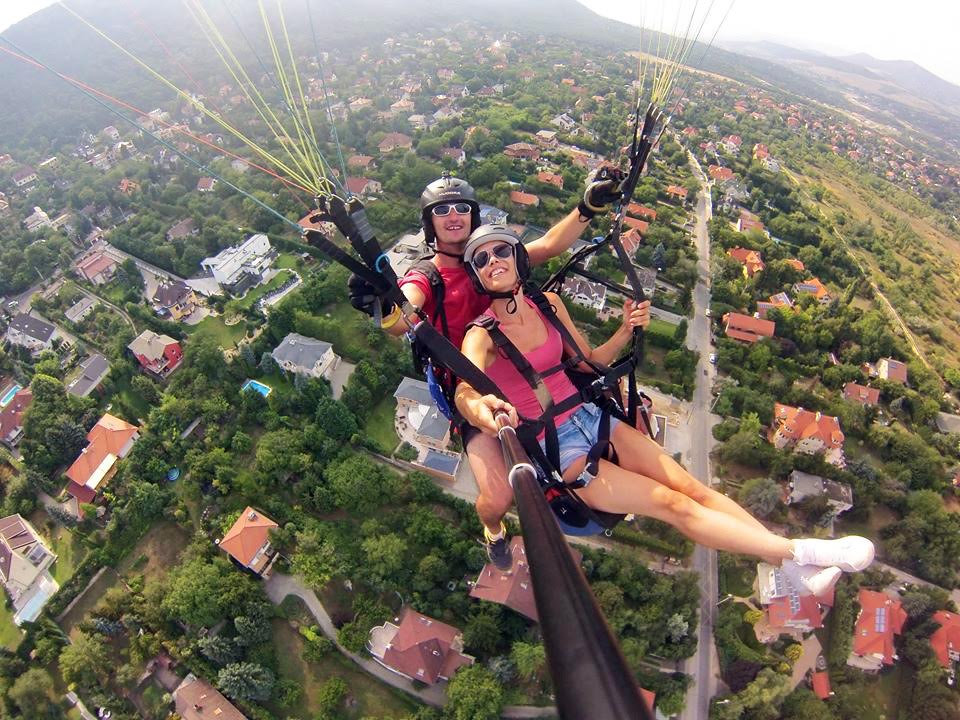“Up in the air we face our true self, our fears and dreams. The rapidly rushing wind clears all our thoughts, and all the things we fear down below seem so far away.” This description, found on the website of the Budapest-based Fly Away paragliding school, couldn’t be a better description of the feeling awaiting courageous flyers up in the air. All it takes is a tiny bit of bravery to let go of the ground and fly high up into the world of birds to see the world below, and experience an exciting chill as the adrenaline flows, all before a cautious calmness fills our soul as we freely fly.
Paragliding is not to be mistaken for parachuting, even though these two share several similarities. While parachuting focuses on the feeling of the free fall, paragliding puts the emphasis on the excitement of free flying for a longer period of time. Paragliding holds a truly special experience, and as the equipment is relatively easy to handle, almost anyone can quickly learn how to spread their freshly grown wings and fly.
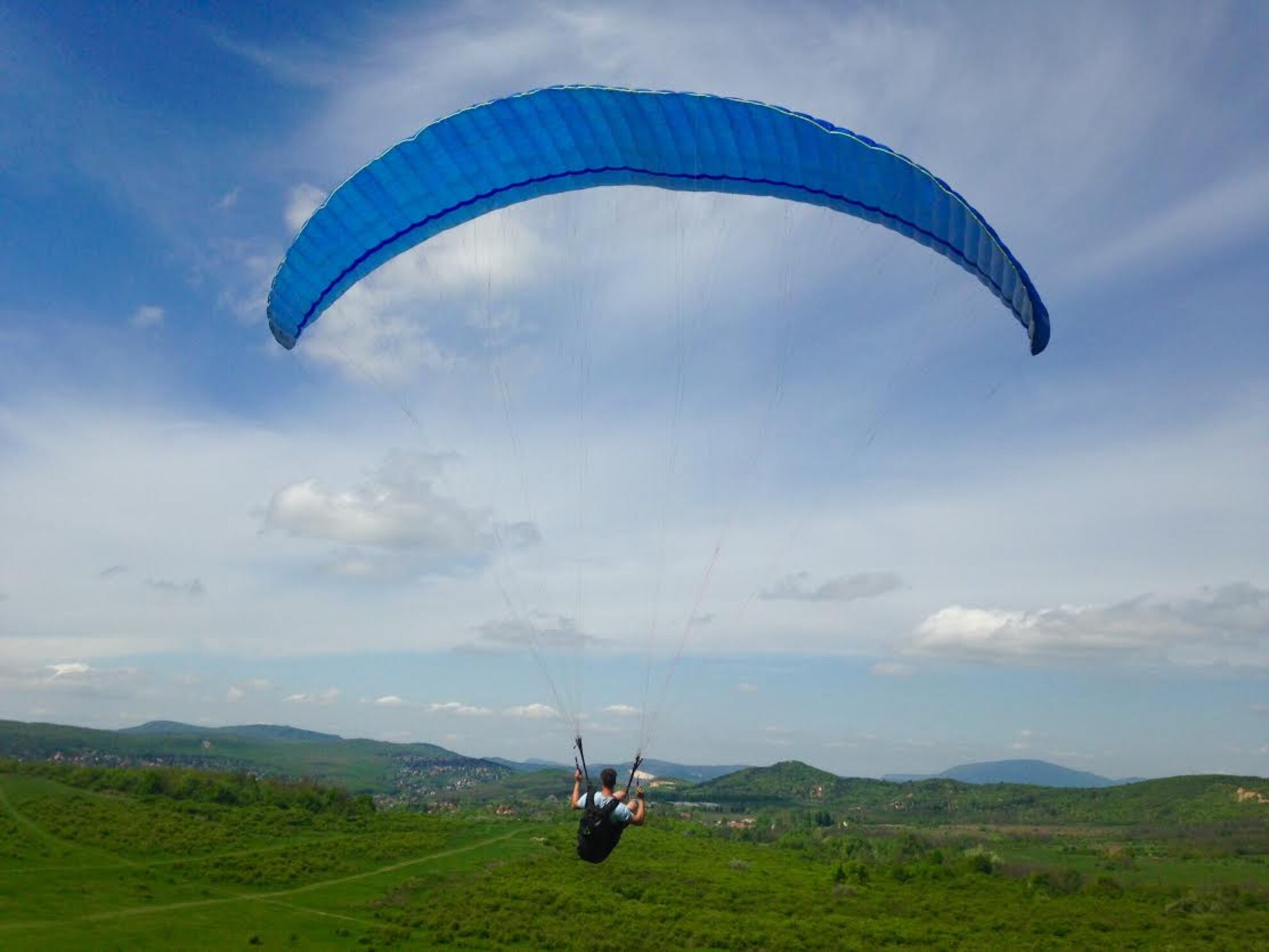
The local representatives of this sport took their first steps three decades ago, with truly great courage as they basically did not know much about paragliding at all, besides some sort of foreign experience, so they started by educating themselves in order to learn all the tips and tricks. Later, they participated in an international competition, where they realized that they did not even know the first thing about paragliding after all. Since then, besides many other sports, their paragliding skills have experienced great improvement: Péter Simonics, one of the founders of
Fly Away, has flown a world-record 278.3 km distance alongside Szilárd Forgó in 2012.
Paragliding is considered to be the simplest and least restricted form of flying. It resembles a glider, or an engineless hang glider, as it also relies on air currents that can keep paragliders up in the air for up to six hours, while progressing several hundreds of kilometers.
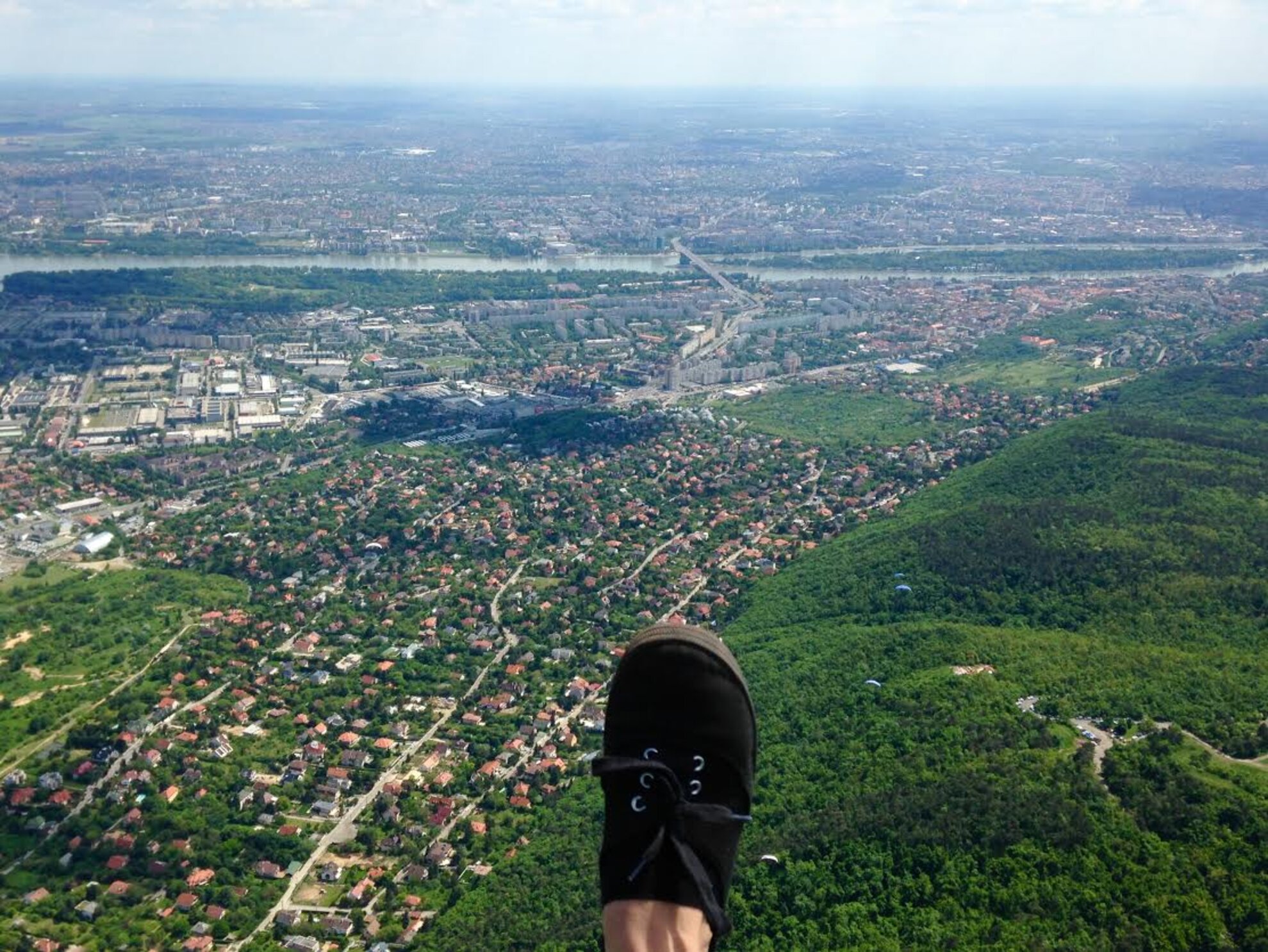
Hungary’s oldest paragliding school is turning 25 years old this year. One of the members, Kinga Szűcs-Gáspár, experienced flying in Turkey for the first time (in a tandem flight, of course), and after her friends guided her to Fly Away, she learned all there is to it very quickly. “At the school we organize teaser days almost every weekend, when flight fans can attend an introductory course of about 15-30 occasions, where they learn the basics (meteorology, technique etc…) before rising up into the air. The number of courses also depends on how fit and how brave the individuals are. One weekend like this costs between 10,000 and 18,000 forints – it is a bit more expensive, when somebody would like to try a tandem flight,” says Kinga, who also told us that their team has 200 members, including the now 78-year-old Uncle Sanyi, who started paragliding at the age of 60.
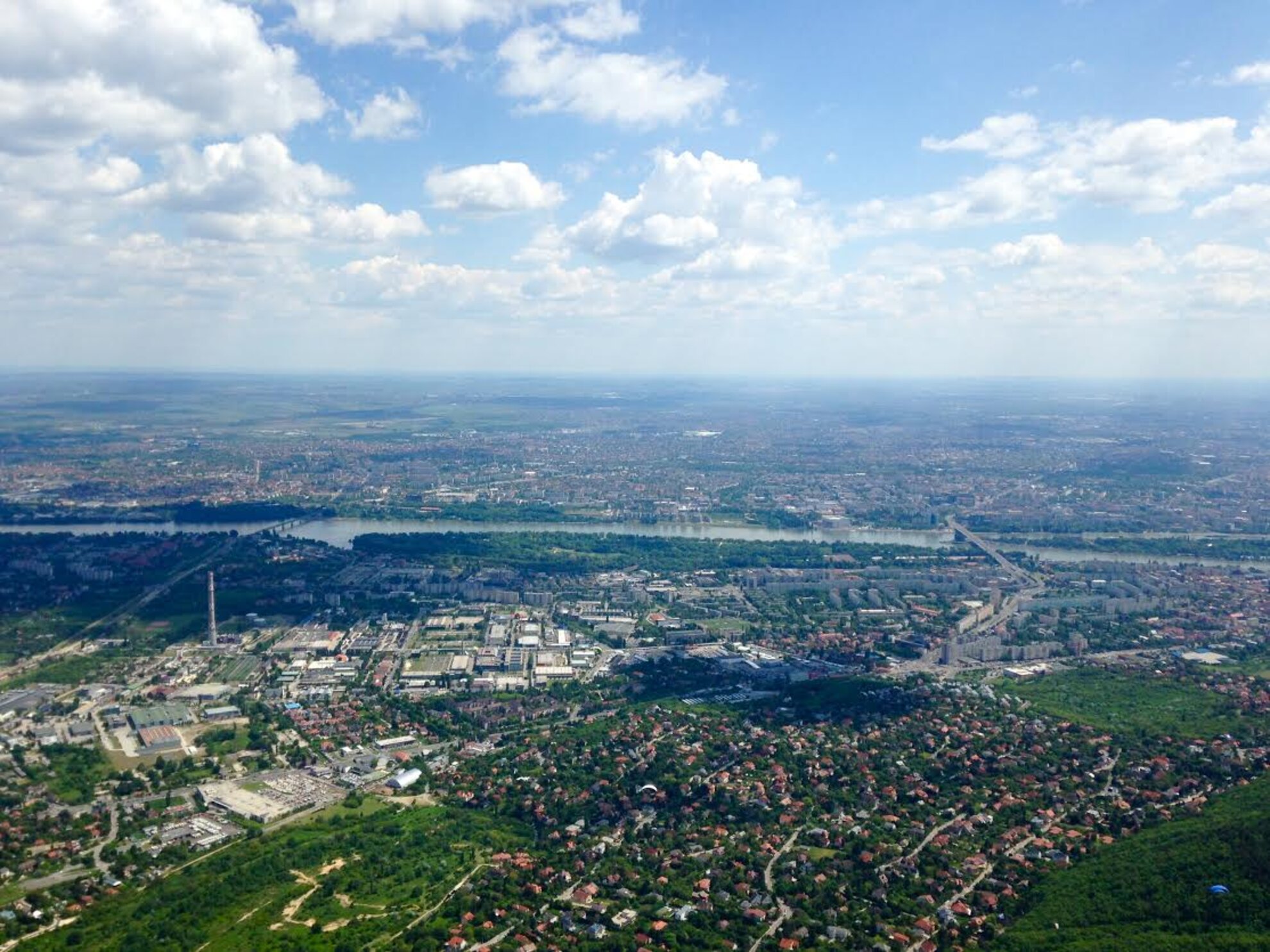
According to Kinga, there are two types of paragliders: those who consider safety more important than anything else; and brave soldiers, who cannot recognize true danger and do absolutely everything high above – it is an inside joke to call these reckless people the “immortal type”.
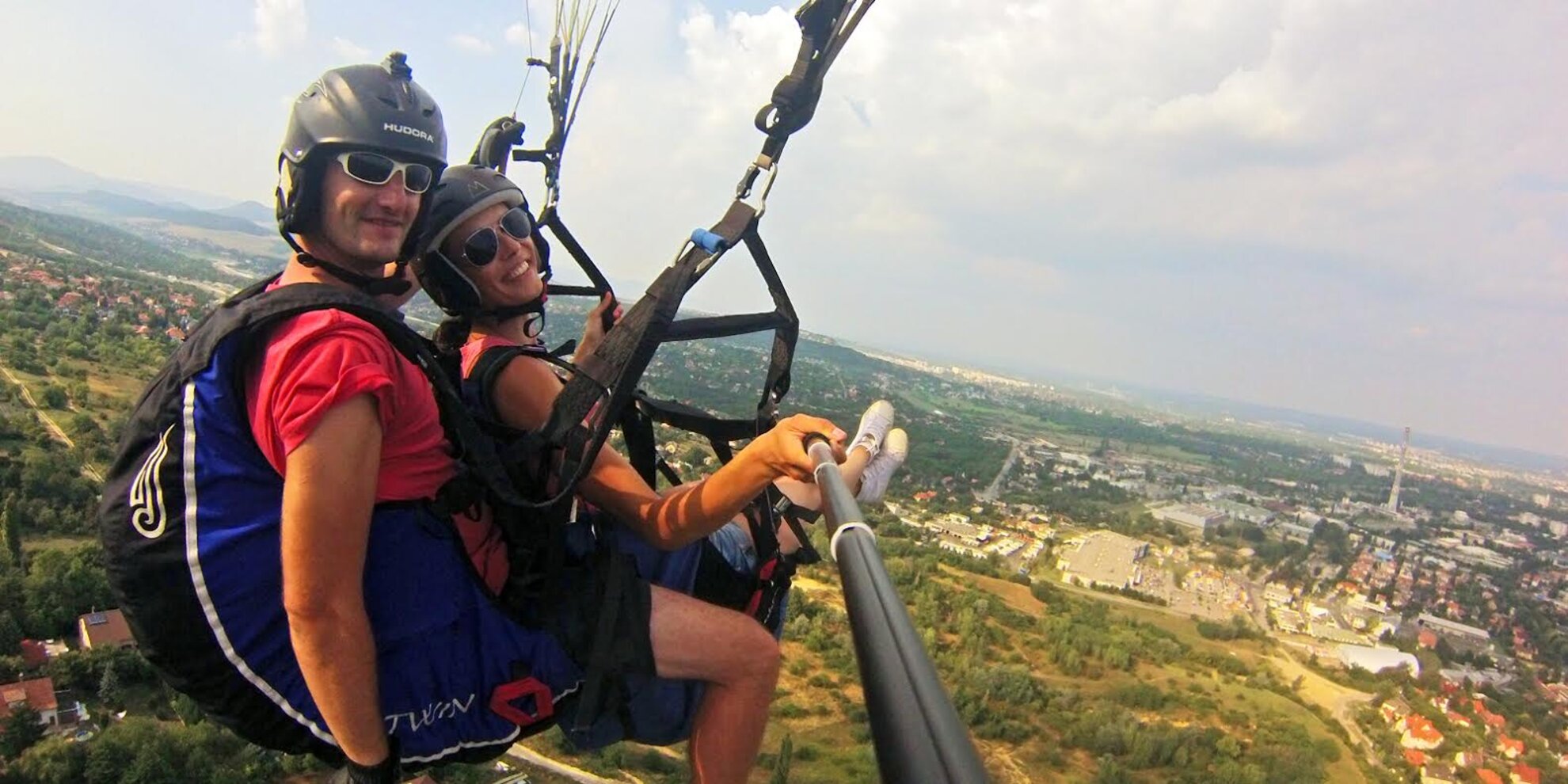
Next come people with fear of heights; many of them join to try fighting their fears. We’ll now share a very surprising detail: one third of pilots are afraid of high places. One of the best ways to fight this phobia is tandem flying, as paragliding is not about standing on the side of a cliff feeling like you could fall off anytime, but rather about trusting your harness, and relying on it to hold you perfectly. The instructors immediately see if someone is too nervous in their reactions to various situations during those classes, where they familiarize flight enthusiasts with their equipment, so if this occurs, and after the first few failed attempts of launching from a small mound they tell you sincerely and directly if they think you are not suitable for “continuing your studies”.
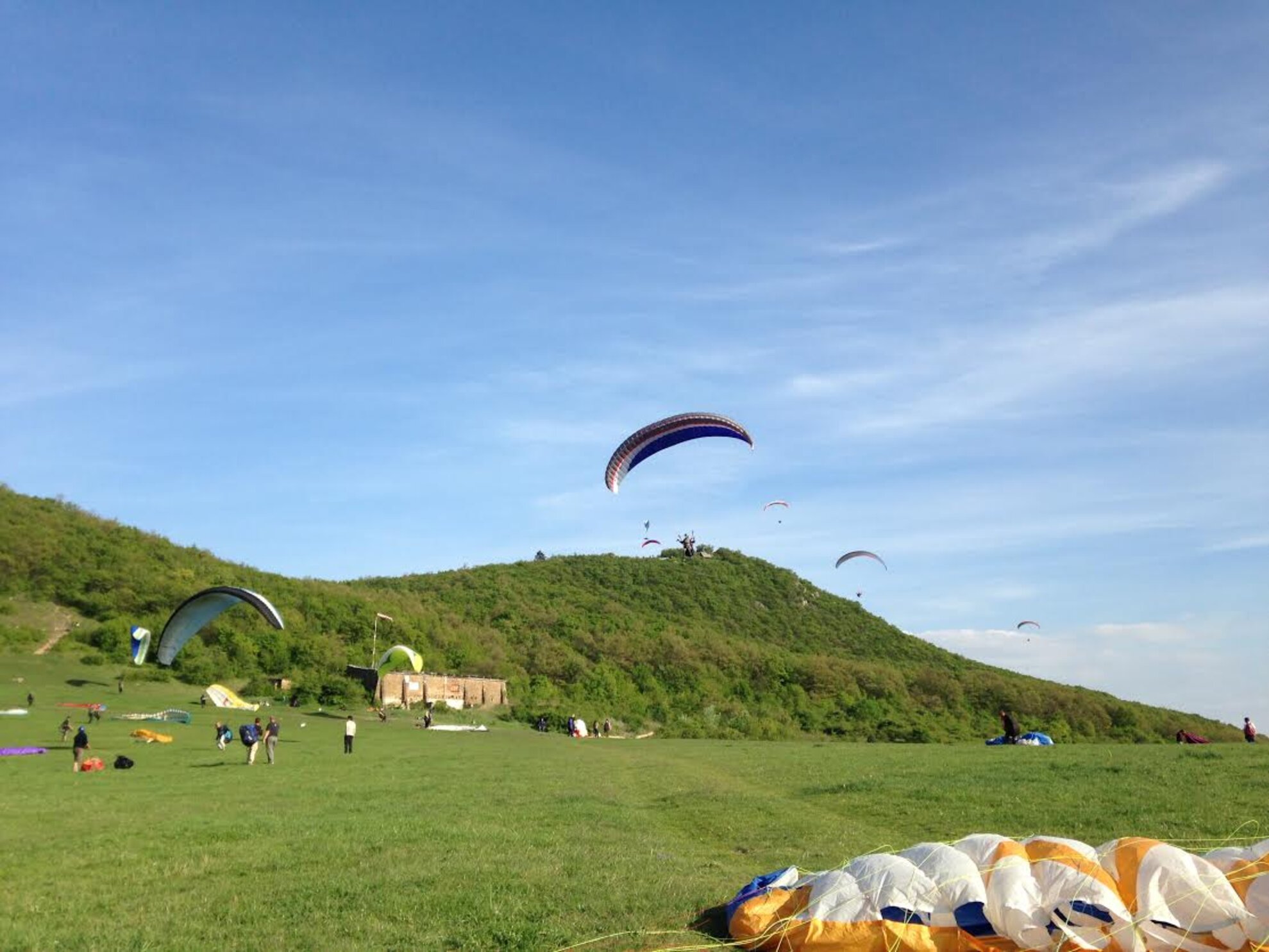
In Hungary there are only a few paragliding sites with a significant difference in altitude. At their most common launching point of the Buda Hills in Óbuda, the difference is about 300 meters, but there are some smaller and bigger, 40-60-meter-high hills that aid launching and are perfect for practicing.
“I saw them circling above Óbuda, and I have always dreamt about trying it myself. I was really scared the first time I tried flying alone; right at the start I felt like standing on the top of a ten-story building. I launched from a height of 30 meters and spent only a few minutes in the air, but I enjoyed it so much that upon landing I rushed back to the top of the hill for another go. After this I couldn’t even imagine not to continue learning it,” says Kata, who fell deeply in love with paragliding when a sneaky smile appeared on her face that didn’t vanish for a week.
For more details on joining Budapest’s paragliding community, check out the Fly Away English-language website.
